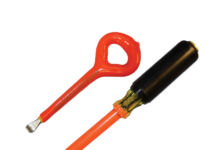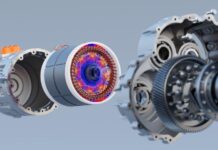It seems like no matter where you live in the country right now, we are all experiencing this historic heat wave. While some are fortunate to work in climate-controlled offices or the comfort of our own homes, the manufacturing industry has typically not been able to slow down or work remotely. And with heat records continuing to be broken as the result of a “heat dome” — a persistent region of high pressure trapping heat over the area — it’s vital that plant teams have plans in place to beat the heat.
Dangers of Overheating
Heat-related illnesses and injuries are an all-too-real concern when it comes to employee safety, especially in the physically demanding nature of manufacturing. In fact, radiation, convection, and conduction stop working when the ambient temperature of the surrounding air is 95 degrees F or higher; leaving evaporation as the only option left to cool the human body.
This risk combined with the record-breaking temperatures led the Department of Labor’s Occupational Safety and Health Administration (OSHA) to increase the monitoring and investigation of heat-related injuries, illnesses, and deaths.
Additionally, OSHA issued an Advance Notice of Proposed Rulemaking (ANPRM) for heat injury and illness prevention in indoor and outdoor work environments. These are the first steps toward establishing a federal heat standard in the United States.
Heat-Related Illness, Injuries, and Tragedies Costs
While heat illness is largely preventable (and commonly under-reported), thousands of workers are made sick each year by workplace heat exposure.
In 2019, workplace heat caused 43 worker deaths and at least 2,410 serious illnesses or injuries. And these numbers are even estimated to be low due to rampant underreporting. While it’s commonly known that heat exhaustion and dehydration can lead to heat stroke, excessive heat exposure can also exacerbate existing health conditions like asthma, anxiety or panic disorders, heat stress, and kidney failure.
On top of the physical impairments, overheating and dehydration can cause mental impairments, too, impacting occupational efficiency and decision-making. This ultimately leads to lower production and more frequent worker errors. Recent studies have shown that overall worker productivity goes down by 4% for every degree above 80° F. This means that a worker could be 20% less productive in an environment that is 85 degrees. (OSHA actually recommends a temperature range between 68 and 76 degrees in workplaces.)
In other words, higher temperatures can cause severe economic losses due to workers being less productive and absent — both mentally and physically —more often when it is hot.
Additionally, similar studies have shown that hydration alone does not lower core body temperatures, making climate control necessary for the optimal mental and physical functioning of a workforce. Excessive workplace heat exposure has been linked to less work hours, increased medical leave, and higher employee turnover — all costly factors that could require employers to hire and train new employees who could ultimately leave for the same reasons as their predecessors should the temperature issue not be addressed.
According to OSHA, the Atlantic Council’s Adrienne Arsht-Rockefeller Foundation Resilience Center estimates total economic loss from heat to be at least $100 billion annually. Furthermore, this amount could double by 2030 and even quintuple by 2050 under a higher emissions scenario as global temperatures are projected to rise.
Be Proactive About Heat and Climate Control
As it is with most maintenance strategies, combating excessive heat must be done predicitvely and proactive; not reactively. (By then, it’s too late. Your workforce is dehydrated, exhausted, and at risk of overheating.)
By monitoring ambient temperatures, plant operators can mitigate the extreme heat before OSHA even imposes the proposed federal regulations.
Depending upon the type of manufacturing or work environment, centralized climate control and/or portable cooling devices could be used to beat the heat.
Evaporative cooling fans work well for large spaces like warehouses and manufacturing facilities where the air is typically very dry. Another option would be cooling towers that are affixed to permanent systems without interruption or downtime to provide supplemental cooling.
Many facilities would also benefit from using high-volume, low-speed (HVLS) fans to provide relief from cool breezes and fabric ductwork to evenly disperse cool air from the central cooling system to all corners of the plant floor.
I know what you’re thinking … Couldn’t we just use the smaller, floor-mounted fans? While they can be helpful, particularly in smaller management offices, they tend to be noisier than HVLS fans and definitively use a higher amount of electricity. Additionally, HVLS fans can move air across as much as 31,000 square feet and replace up to 20 floor fans.

According to the U.S. Department of Health and Human Services, a 2-3 mph air speed creates an evaporative cooling sensation of 7 to 11 degrees F on the human body. To put this in perspective, the effective temperature of an 84-degree warehouse environment can be dropped to 73 degrees by adding a fan moving air at 3 mph, making workers up to 35 percent more productive.
And with their ability to circulate air in large and small spaces, it could be argued that HVLS fans provide similar health benefits as central cooling systems.
Another option would be the installation of fabric ducts to spread air evenly throughout your facility.
Traditional metal HVAC ductwork systems are not always the most efficient in terms of air dispersion options for large warehouses, plants, and manufacturing facilities with open spaces. This is why fabric ductwork has grown in popularity in recent years.
The design of its air-porous and strategic perforations provides even air distribution that virtually eliminates hot and cold spots experienced with traditional metal ductwork. In facilities that offer air conditioning, air-porous fabric ducts and diffusers can provide optimal air delivery while eliminating the potential of condensation forming and dripping on processes and people below.
The fabric used in these duct systems is customizable and based on the needs of the space, which provides a wide variety of options for each specific space and application. The light weight and flexibility of their fabric also makes fabric duct systems less expensive and easier to ship than metal ductwork, all while requiring less installation time.
Fabric diffusers that provide pourous, 360-degree openings allow users to maximize conditioned air distribution. Compared to its metal counterpart, a round fabric diffuser brings the occupied space to temperature 22% faster while offering a lower ceiling load, according to a 2011 Iowa State University study.
Considering the budget reality of many businesses, these reduced costs are often a big benefit. Unlike metal, fabric ductwork systems are immune to scratches and dents, and since they don’t have resonating properties like metal, they are quieter, too.
Companies may also want to consider establishing cooling and hydration stations like shaded misting areas with bottled water and electrolyte-loaded beverages.
It’s also worth weighing the pros and cons of buying versus renting cooling stations. While renting is typically more cost-effective if this equipment is only needed periodically, it doesn’t hurt to have the supplies on-hand should an unexpected heat wave strike.
Whether you decide to buy or rent, install evaporative cooling fans or invest in big-time climate control, it’s imperative that employers and building operators protect their workforce from heat exposure and its related illnesses and injuries.
The information provided herein is provided as a general reference regarding the use of the applicable products in a specific application. It is your responsibility to ensure that you are using all mentioned products properly in your specific application and in accordance with all laws and regulations.












































